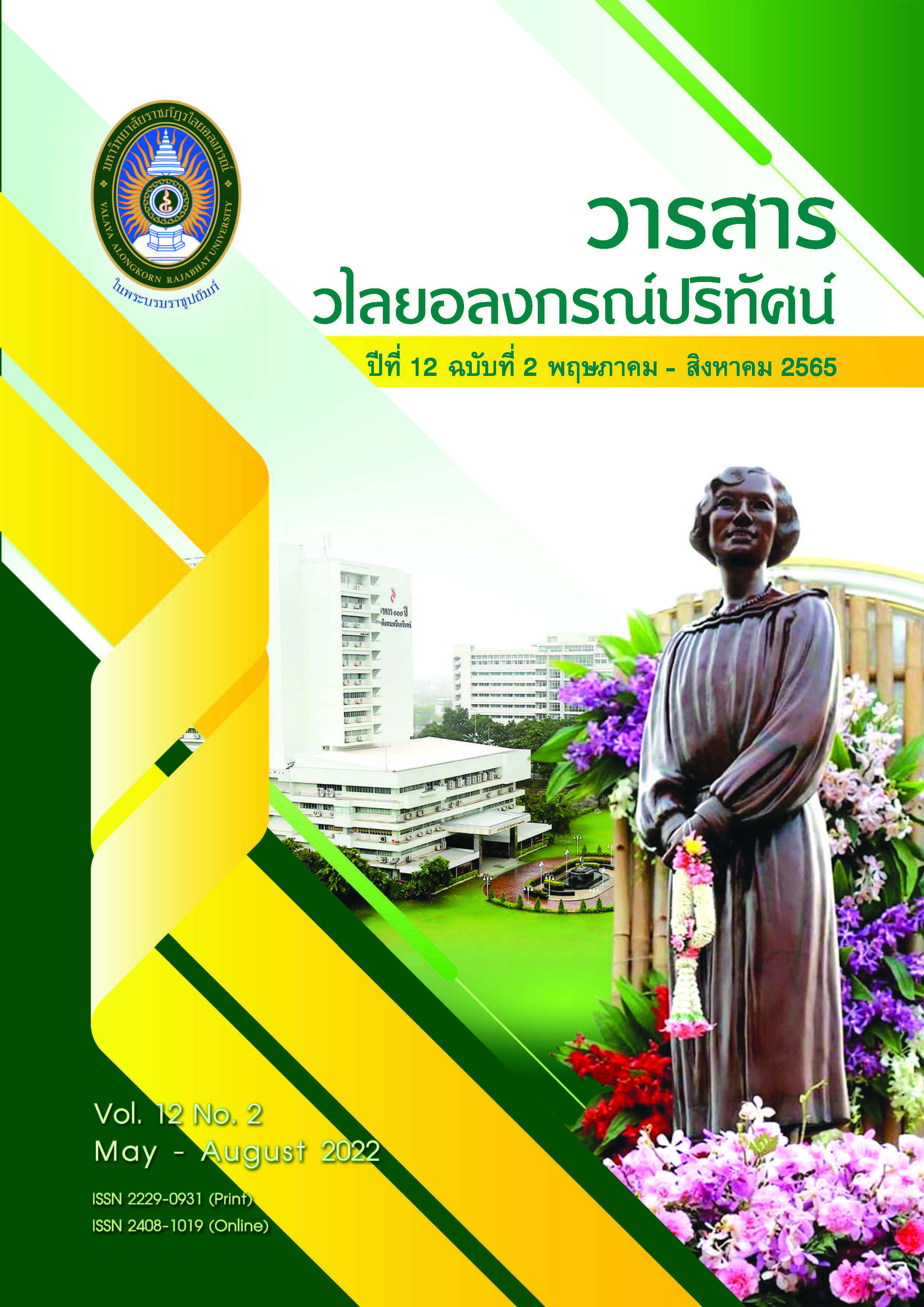การศึกษาความสัมพันธ์ระหว่างปัจจัยในโมเดลการยอมรับเทคโนโลยี 3 และการยอมรับการเรียนรู้เชิงรุกในนักศึกษาปริญญาตรี สาขาวิทยาศาสตร์สุขภาพ
คำสำคัญ:
การเรียนรู้เชิงรุก, แบบจำลองการยอมรับเทคโนโลยี 3, นักศึกษาวิทยาศาสตร์สุขภาพบทคัดย่อ
การวิจัยนี้เป็นวิจัยเชิงปริมาณมีวัตถุประสงค์เพื่อ 1) ศึกษาการรับรู้การเรียนรู้เชิงรุกของนักศึกษาวิทยาศาสตร์สุขภาพในระดับชั้นพรีคลินิก 2) ศึกษาความสัมพันธ์ของแต่ละปัจจัย กับการยอมรับการเรียนรู้เชิงรุกในระดับพรีคลินิก และ 3) ศึกษาความสัมพันธ์ระหว่างปัจจัยที่ส่งผลต่อการยอมรับการเรียนแบบเชิงรุก โดยศึกษาจากกลุ่มตัวอย่างเป็นนักศึกษาศูนย์สุขศาสตร์ชั้นปีที่ 2 และ 3 จำนวน 311 คน ตัวแปรที่ใช้เป็นปัจจัยในโมเดลการยอมรับเทคโนโลยี 3 (Technology Acceptance Model 3; TAM 3) ซึ่งเป็นที่ยอมรับและใช้กันอย่างกว้างขวางในการศึกษา เรื่อง การยอมรับนวัตกรรม จำนวน 15 ปัจจัย ได้แก่ 1) การรับรู้ว่ามีประโยชน์ 2) การรับรู้ว่าง่าย 3) การคล้อยตามกลุ่มอ้างอิง 4) ภาพลักษณ์ 5) ความเกี่ยวข้องสัมพันธ์กับงาน 6) คุณภาพของผลลัพธ์ 7) ผลลัพธ์ที่แสดงให้เห็นก่อนหน้า 8) สมรรถภาพของตนเอง 9) การรับรู้ถึงการควบคุมจากภายนอก 10) ความวิตกกังวล 11) ความสนุกสนาน 12) ความเพลิดเพลิน 13) การใช้งานตามวัตถุประสงค์ 14) ประสบการณ์ และ 15) ความสมัครใจ เครื่องมือที่ใช้เป็นแบบสำรวจที่ผ่านการตรวจสอบความตรงและความเที่ยงที่มีค่า Cronbach’s alpha เฉลี่ยรวมเท่ากับ 0.83 โดยใช้สถิติพื้นฐาน สถิติเชิงพรรณนา และการวิเคราะห์ความสัมพันธ์
ผลการวิจัยสรุปได้ดังนี้ 1) นักศึกษามีการรับรู้การเรียนรู้เชิงรุกในระดับปานกลาง ( = 3.73, S.D. = 0.74) โดยปัจจัยที่มีค่าเฉลี่ยของความเห็นสูงสุด ได้แก่ ความเกี่ยวข้องสัมพันธ์กับงาน (
= 4.25, S.D. = 0.67) 2) เกือบทุกปัจจัยมีความสัมพันธ์เชิงบวกกับการยอมรับการเรียนรู้เชิงรุกอย่างมีนัยสำคัญทางสถิติ (p < 0.001) ยกเว้นประสบการณ์ที่มีความสัมพันธ์เชิงบวก (ค่าความสัมพันธ์ 0.04) แต่ไม่มีนัยสำคัญทางสถิติ และมีเพียงปัจจัยเดียวที่มีความสัมพันธ์เชิงลบต่อการรับรู้การเรียนรู้เชิงรุกคือ ความวิตกกังวล (ค่าความสัมพันธ์ -0.16) โดยปัจจัยที่มีความสัมพันธ์กับการยอมรับการเรียนรู้เชิงรุกอย่างมาก ได้แก่ การยอมรับว่าการเรียนรู้เชิงรุกง่าย (ค่าความสัมพันธ์ 0.92) และการยอมรับว่าการเรียนรู้เชิงรุกมีประโยชน์ (ค่าความสัมพันธ์ 0.83) 3) ความสัมพันธ์ระหว่างปัจจัยที่มีค่ามากที่สุดได้แก่ ความสัมพันธ์ระหว่างความสนุกสนานกับความเพลิดเพลิน (ค่าความสัมพันธ์ 0.77)
เอกสารอ้างอิง
ธนพัฒน์ อินทวี. (2563). ปัจจัยสาเหตุที่ส่งผลต่อความพึงพอใจในการเรียนแบบ Active Learning ของนักศึกษามหาวิทยาลัย. วารสารนวัตกรรมการศึกษาและการวิจัย. 4(3), 383-394.
นุชจรีย์ หงษ์เหลี่ยม, นัดดา วงษ์วรรณา, และพิราวรรณ หนูเสน. (2560). การศึกษาพฤติกรรม การเรียนของนักศึกษาแพทย์ชั้นปรีคลินิก ปีการศึกษา 2559 คณะแพทยศาสตร์ศิริราชพยาบาล. เวชศาสตร์บันทึกศิริราช. 10(3), 166-173.
ปนัดดา หัตถโชติ, วัลลี สัตยาศัย, นภา หลิมรัตน์, ชัยพฤกษ์ กุสุมาพรรณโญ, อำนาจ รัตนวิลัย, ปริยสุดา เหตระกูล, มณฑาทิพย์ มณีโชติรัตน์. (2551). ทัศนคติและความรู้ความเข้าใจเกี่ยวกับการเรียนการสอน PBL ของอาจารย์ที่สอนในหลักสูตรแพทยศาสตรบัณฑิต. เวชสารแพทย์ทหารบก. 61(1), 3-11.
วารินท์พร ฟันเฟื่องฟู. (2562). การจัดการเรียนรู้ Active Learning ให้สำเร็จ. วารสารวไลยอลงกรณ์ปริทัศน์. 9(1), 135-145.
ABD Rahman, S. F., MD Yunus, M., & Hashim, H. (2019). A Technology Acceptance Model (TAM): Malaysian ESL Lecturers’ Attitude in Adapting Flipped Learning Jurnal Pendidikan Malaysia. Malaysian Journal of Education. 44(1), 43-54.
Boughzala, I. (2014). How Generation Y Perceives Social Networking Applications in Corporate Environments. In I. Lee (Ed.), Integrating Social Media into Business Practice, Applications, Management, and Models. United States: Idea Group.
Cavanagh, A. J., Aragón, O. R., Chen, X., Couch, A., Durham, F., Bobrownicki, A., Hanauer, D. I., & Graham, M. J. (2016). Student Buy-In to Active Learning in a College Science Course. CBE life sciences education. 15(4), 76.
Decman, M. (2020). Factors that Increase Active Participation by Higher Education Students, and Predict the Acceptance and Use of Classroom Response Systems. International Journal of Higher Education. 9(4), 84-98.
ดาวน์โหลด
เผยแพร่แล้ว
รูปแบบการอ้างอิง
ฉบับ
ประเภทบทความ
สัญญาอนุญาต
ลิขสิทธิ์ (c) 2022 โสภาพรรณ เอกรัตนวงศ์, ธิดา ทับพันธุ์, เสมอกาญจน์ โสภณหิรัญรักษ์

อนุญาตภายใต้เงื่อนไข Creative Commons Attribution-NonCommercial-NoDerivatives 4.0 International License.
ข้อความที่ปรากฏในบทความแต่ละเรื่องในวารสารวไลยอลงกรณ์ปริทัศน์ เป็นความคิดเห็นของผู้นิพนธ์แต่ละท่าน มิใช่เป็นทัศนะและมิใช่ความรับผิดชอบของกองบรรณาธิการจัดทำวารสาร และ
มหาวิทยาลัยราชภัฏวไลยอลงกรณ์ ในพระบรมราชูปถัมภ์


